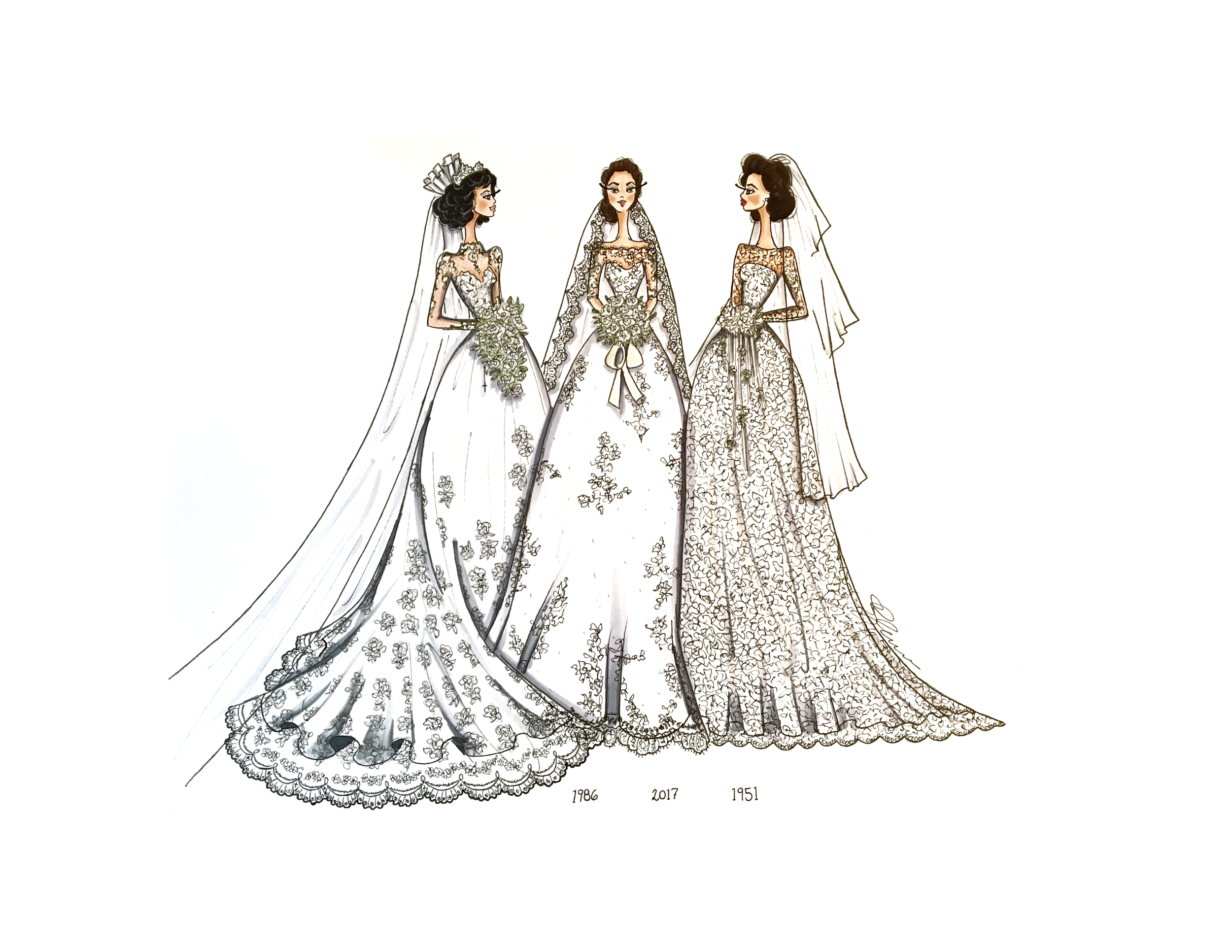We are pretty deep into wedding season right now, and my TikTok has been flooded with wedding content. I love it! One trend that I have been seeing more than ever (thanks to social media, not because it hasn’t been happening) is incorporating vintage wedding dresses into your wedding. Most of these dresses are the brides’ moms’ (or grandmothers’) dress, but this could be done with any family members’ outfit, or just a beautiful gown you found at Goodwill. Today I wanted to share with you a few ideas of what to do if a vintage gown happens to land in your wedding wardrobe:
Tailor it to you and wear it proudly!
Almost 35 years ago, my mom wore her moms’ wedding dress. She changed the fitted sleeves to puffy sleeves and opened up the neckline which I questioned my whole life until looking at bridal trends while planning my own wedding. I never believed that huge sleeves and satin dresses could be so popular, but here we are again. Take the wedding dress that was given to you and don’t be afraid (with permission of course) to make it your own! This can also apply to a veil or other wedding looks/accessories.
2. shorten it
Take the sentimental vintage dress and shorten it to wear for your bridal shower, rehearsal dinner, or reception look! This is such a great way of including a special piece from a family member’s wedding day while having your wedding day be about creating memories of your own.
3. Add a slit and party all night!
Sort of the same idea as shortening, but with any vintage dress you may have, never forget you may have the option of adding a slit and turning it into your reception/after party dress! You’ll typically be able to create a slit if the dress is fitted and is there’s a seam somewhere in the front or it’s a ballgown/A-line silhouette with the extra fabric you need. By using this option you will have entered into marriage with your something new, but you’re celebrating your marriage with memories of the past.
4. Use just a little something
If you don’t want to wear the dress as is, or if it’s too damaged and fragile to wear, you can take pieces of the dress (like lace appliqué) and include it into your wedding day. Depending on how much lace you have, it can be added to the waist, bodice, sleeves or hemline. Other fabrics can be used to create sleeves, bolero/cropped jacket, or shawl. A big way would be to use the lace for your veil, and a small way would be to sew a piece of that dress to the inside lining of your dress, or make it a part of the flower girls’ dress. You could also wrap your bouquet in fabric, or use some of the fabric as a pocket square (if you or your fiance are wearing a suit)!
Save this post and use it as a reminder to preserve your wedding dress! Even if you choose not to use any of these ideas on your wedding day, a family member 20-50 years down the line might and I know they would appreciate you putting in that extra effort. Looking to have a custom gown designed? Let’s chat! Just click here.
Happy dressing!
Lauren Allen, Author
Lauren is a bridal consultant and self-published author, with a background in celebrity styling and bridal make up artistry. You can find her with an oat milk cappuccino in the morning, and a glass of Cabernet at night, her real passions. Lauren is based in Kansas CIty and her book “How to Be 23” can be found here








